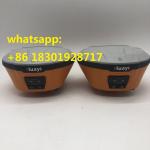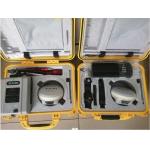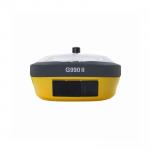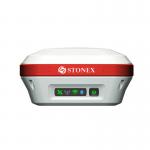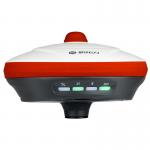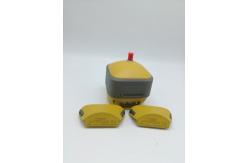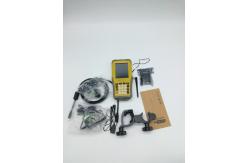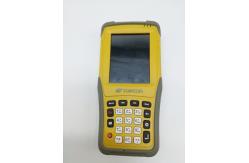RTK GNSS Receiver Hybrid GNSS Receiver Topcon HiPer HR 452 GNSS
channelHybrid GNSS ReceiverEvery job site is different. Every project has unique geographic
conditions. Each day brings new hurdles to overcome. Topcon's HiPer
HR has everything you need in an integrated GNSS receiver in order
to get your job done. Features & Benefits- 452 GNSS channel Vanguard Technology™ with Universal Tracking
Channels for multi-frequency tracking of multiple satellite
constellations such as GPS, GLONASS, BeiDou, QZSS, SBAS and
Galileo.
- Industry leading full-wave Fence Antenna™ technology
- An internal battery and a detachable external battery
- An internal UHF or FH-915 radio modem
- Integrated Bluetooth®, multi-channel LongLink™, and Wi-Fi wireless
and radio technology
- Topcon Integrated Leveling Technology (TILT™)
Next Generation in GNSS Receiver TechnologyTopcon is proud to be the world leader in advanced satellite
positioning technology. As the original pioneer of
dual-constellation and G3 triple constellation integration, Topcon
continues to lead all other manufacturers with the most
sophisticated receiver technology and design. A Cut Above the RestStanding on the shoulders of Topcon's proven, industry-leading GNSS
technology and innovation, the HiPer HR comes out head and
shoulders above the competition. Starting from the foundation of
Topcon's world-class infrastructure GNSS receiver (Topcon NET-G5), we put that same power in a more portable, field-ready physical
package. When it comes to communication options, it's the best of
both worlds, marrying the simplicity of the Topcon HiPer SR's LongLink™ Bluetooth® communication, with the versatility and
range of the Topcon HiPer V's radio choices (UHF and SS). Add to this flexibility with the use
of the internal cellular modem in a base scenario with MAGNET Relay. Or on the rover pole, create a Network RTK rover via correction
services such as those provided by TopNETlive. You now have the ultimate GNSS receiver at your disposal, primed
and ready to tackle any GNSS project you may come across. With an Eye to the Future AND PastTopcon's HiPer HR fits a lot into a small package, without
sacrificing features and capabilities. We've raised the bar on
consumer expectations for GNSS receivers by adding new technology
and features while maintaining backwards-compatibility with prior
Topcon GNSS receiver products. This continues Topcon's mantra of
creating future-proof products that also protect a customer's past
investment in other Topcon products. ..wait, there's more!Not only does is the HiPer HR a powerful, versatile RTK rover, but
if you combine it with MAGNET Field software and a Topcon robotic
system, you can leverage the flexibility of Hybrid Positioning Technology to complete your diverse projects in less time. Now the strengths
of both RTK and robotic surveying are at your fingertips, allowing
you to switch from one to the other with a single button-push.
Enjoy increased productivity over what you can achieve with either
RTK or robotic setups by themselves. | GNSS |
|---|
Signals Tracked | GPS: L1, L1C, L2, L2C, and L5
GLONASS: L1, L2, L3
Galileo*: E1, E5a, E5b, E5AltBOC, E6
BeiDou: B1, B2, B3 with ICD availability
SBAS: L1 C/A, L5 (on supported SBAS satellites)
QZSS: L1 C/A, L1C, L1-SAIF, L2C, L5
L-Band: 1525-1560 MHz (OmniStar and TerraStar) | Number of Channels | 452-Channel Vanguard Technology with Universal Tracking Channels
capable of All-in-View tracking | Antenna Type | Integrated, micro centered Fence Antenna™ with Ground Plane (1) | | Positioning Performance (2) |
|---|
Static | H: 3mm + 0.1ppm (3)
V: 3.5mm + 0.4ppm (3) | RTK | H: 5mm + 0.5ppm
V: 10mm + 0.8ppm | Data Update/Output Rate | 20 Hz Standard, upgrades available (to 100 Hz) | Correction format | TPS, RTCM SC104 2.x, 3.x**, MSM, CMR, CMR+, BINEX | ASCII Output | NMEA 0183 version 2.x and 3.0, RINEX and BINEX | RINEX | Onboard RINEX Conversion | | Communication & Memory |
|---|
Optional Radio Type | Integrated UHF (410-470 MHz), 12.5 kHz spacing (Satel, PDL,
TrimTalk protocols)
Integrated Spread Spectrum (915MHz), FH915 & FH915+ protocols | Base Radio Output | 0.1W to 1.0W, user selectable | Cellular Communications | Integrated HSPA Cinterion PXS8 (optional) | Wi-Fi | 802.11 a/b/g (>20m indoors, 50m outdoors) | Bluetooth® | Class 1 LongLink™ (>300m outdoors)
Class 2 (>25m outdoors)
BLE (>2m indoors) | NTRIP | Server, Client, Caster | Input/Output | Serial, USB 2.0 (Client/Host), 1PPS (combined with Serial A) | Memory | Up to 8 GB | Data Logging | Up to 8 simultaneous files | | Environmental |
|---|
Operating Temperature | -40°C to +65°C*** | Humidity | 100% Condensing (MIL-STD 810G) | Vibration Rating | MIL-STD 810G, Method 514.6, Broad band noise (random vibration),
along each of 3 axes, Category 4, table 514.6C-IV | Mechanical Shock | Mil-STD 810G Method 516.6, along each of 3 axes. Procedure I -
Functional Shock, Table 516.6-I, Fig. 516.6-8, accelerative forces
up to 40g | Waterproof/Dustproof | IP67 per IEC60529 | Drop and Topple | 2.0m pole-drop onto concrete surface | | Power |
|---|
Input Power (External) | 6 to 28 VDC (ODU-5) | Internal batteries | (2x) 3.7V, 2600 mAh each | External Battery | 7.2 V, 2900 mAh, user replaceable | Operating Time | GGD Standalone – 6h
GGD UHF Rover – 4h
GGD UHF Base – 3.5h | Battery charging time | < 5h | Power Consumption | 6 W: minimum (GGD)
8 W: full system tracked
12 W: UHF Base
up to 30 W: during charging | | Physical |
|---|
Size | 131.5mm (H) x 115mm (W) x 115mm (D) | Weight | 1kg - w/o secondary battery
1.145kg - w/ secondary battery | Ports | 1 x RS232 (ODU-7), USB Micro A/B 2.0, WHAT ELSE GOES HERE? | | Notes |
|---|
Note | 1. Multiple patents are associated with Fence Antenna technology.
2. Precision in RMS; Subject to multipath anomalies, interference,
atmospheric conditions and atypical satellite geometry. GNSS survey
best practices must always be applied.
3. Under nominal observing conditions and strict processing
methods, including use of dual frequency GPS, precise ephemerides,
calm ionospheric conditions, approved antenna calibration,
unobstructed visibility above 10 degrees and an observation
duration of at least 3 hours (dependent on baseline length). | Note | * Support for Galileo signals is incorporated. Positioning solution
with these signals will be integrated and made available when the
constellation has matured and is ready for commercial use.
** Use of industry standard RTCM 3.x is recommended for optimal
performance
*** -40°C to +85°C Storage Temp. |
|
